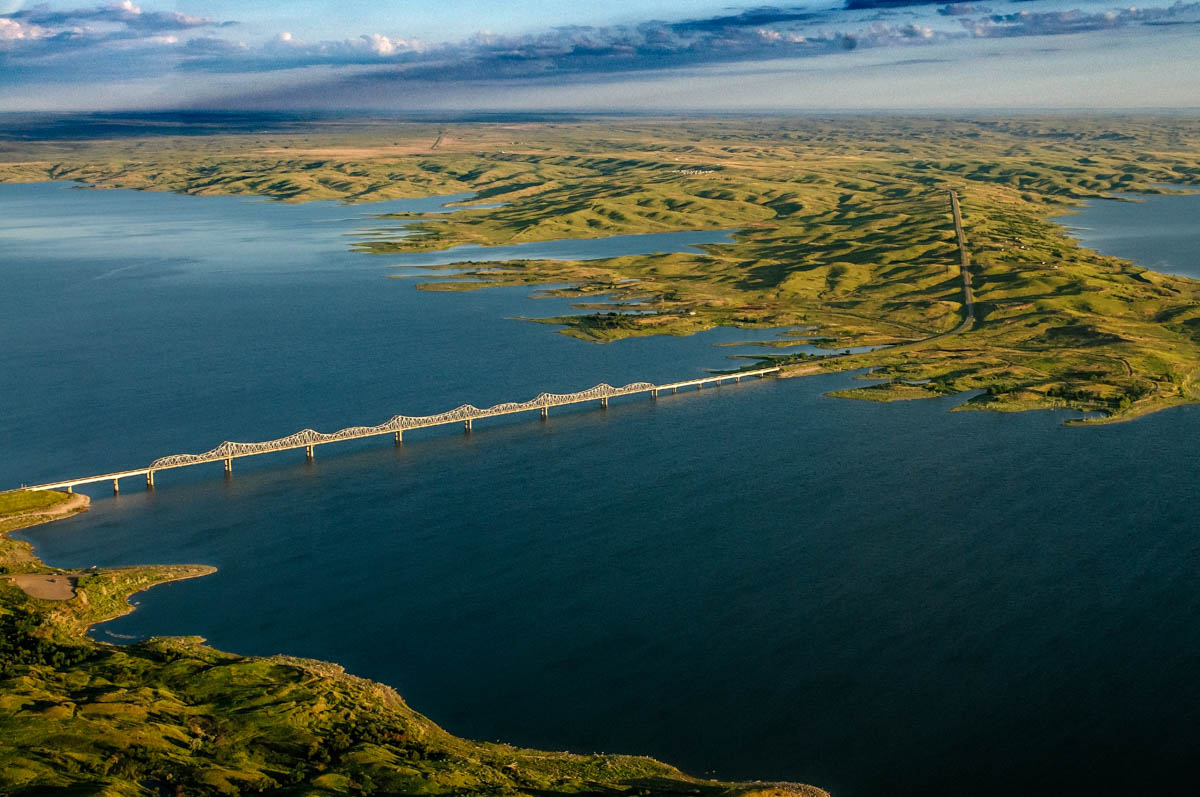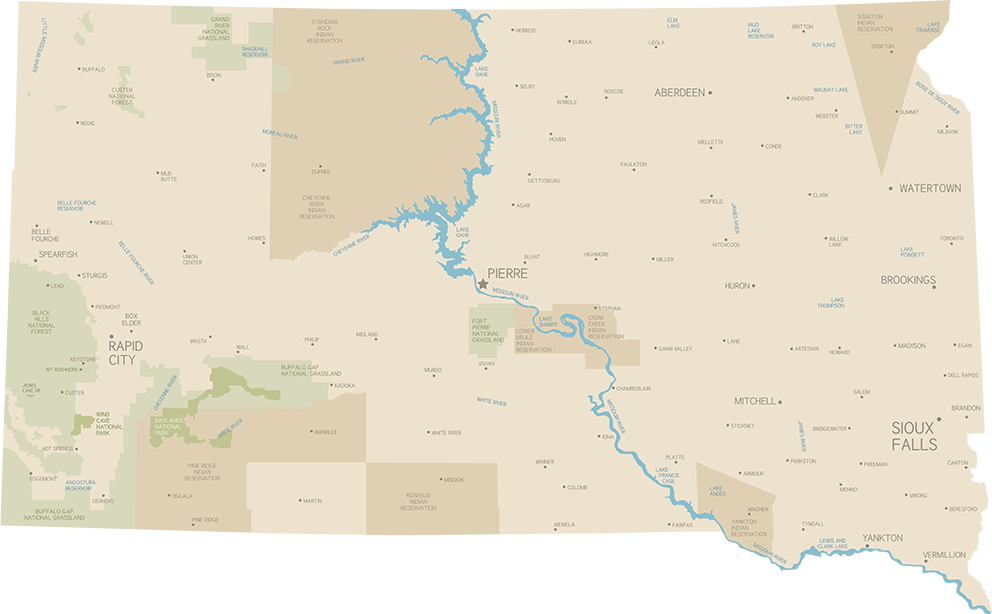Upland Bird Hunting in Central SoDak
The rolling hills and valleys of South Dakota’s main river is home to the best hunting in the nation; see why!
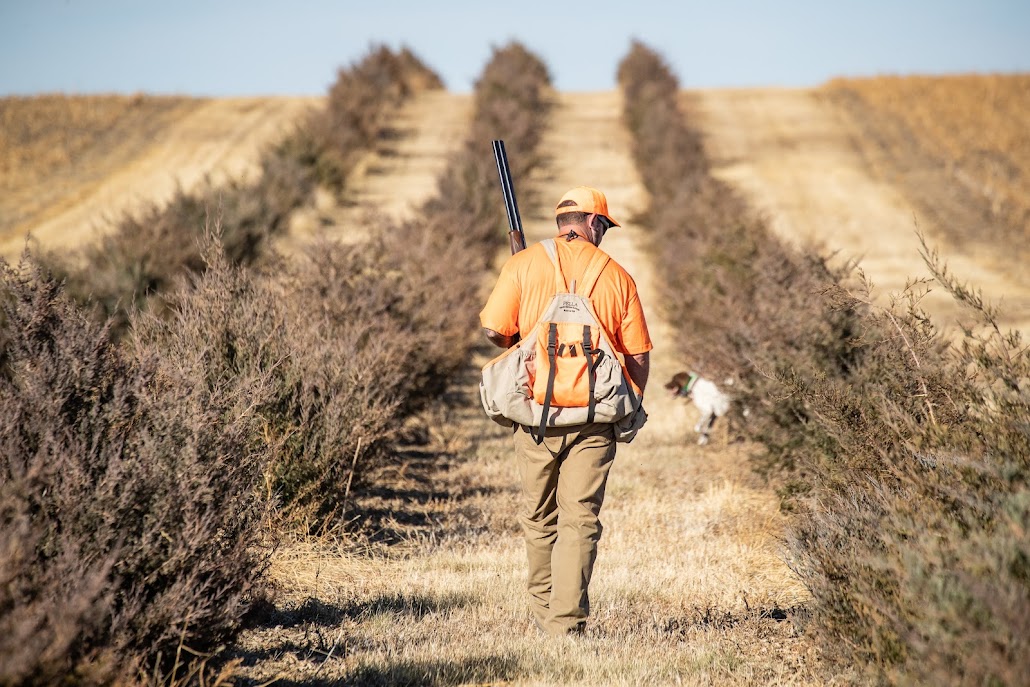
Hunt the Greatest this season in Central SoDak, where the territory for hunting upland birds is unmatched. South Dakota is notably one of the finest pheasant destinations in the midwest, and the rest of the country for that matter. The wide rolling hills along the Missouri River and vast prairies in central SoDak have become an iconic landscape setting to marksmen all over the world. Hunters in Central SoDak can also enjoy fishing the Mighty Mo after reaching wing limits for the day. Bird-hunting is a long-standing tradition for South Dakotans, dating back to the first pheasant season opener in the year 1919. The whole state, especially rural communities and small towns, go all out each year to celebrate and participate in the start of hunting season, creating a festive and adventurous atmosphere for locals and visitors, which everyone calls Rooster Rush.
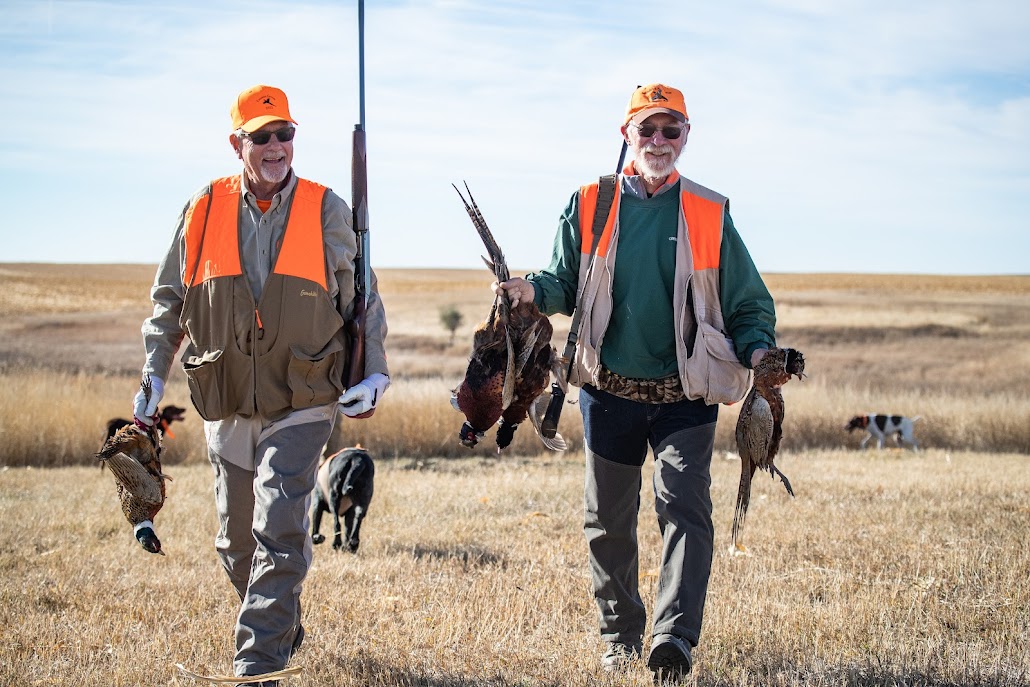
Upland Bird Hunting
Central South Dakota's biggest hunting season is in the fall when the Pheasant Season Opener inspires bursts of bright orange in everyday attire. Starting in October, hunters flock to the area, trooping out across millions of acres of public and private hunting grounds. South Dakota is one of the few places in the world where you can bag the upland bird trifecta – Sharp-tailed Grouse, Greater Prairie-chicken, and Ringnecked Pheasant – all in one hunt!
South Dakota Game, Fish, and Parks (SDGFP) released pheasant numbers from October 15, 2022, to January 31, 2023, an estimated harvest of 1,158,000 birds. SDGFP also noted that while surrounding states see harvest rates of 3 - 6 birds per hunter, South Dakota routinely sees harvest rates at around 9 pheasants per hunter.
The pheasant 2024 hunting season is predicted to be amazing. The biggest factors that affect pheasant populations are weather and habitat, and the weather has been perfect for habitat and pheasant survival. A mild winter, moderate spring and summer temperatures, plus a lot of rain, has grown great ground cover and placed less extreme heat and cold stress on the birds.
Quick Facts About SD Hunting Lands
South Dakota boasts 5 million acres of hunting on public and private lands, including walk-in areas, waterfowl production areas, game production areas, wildlife refuges, national grasslands, and others. While 80% of South Dakota is private land, SDGFP has enrolled over 1,557,000 acres of private land into hunting programs to open plenty of areas for public hunting. There are many different types of private land publicly accessible to hunters: Walk-in Areas, CREP lands, CHAP lands, COOP management areas, Lower Oahe Waterfowl Access, and others. Public Lands owned by state entities include Game Production Areas, Waterfowl Production Areas, and others.
The 2024 Public Hunting Atlas published by SDGFP, updated every August, outlines all of these accessible lands. Find physical copies at SDGFP offices, town city chambers, and visitor centers.
Offline Public Hunting Atlas
See more about SD Hunting Areas
South Dakota’s Bird Species that put Central SoDak on the Map
The impressive number of pheasants and other game birds is possible because South Dakota residents, farmers, hunters, and state government understand and support providing plenty of the right habitat for bird populations to thrive. Regionally, the three most famous and sought-after species of game birds are the flashy Ringnecked Pheasant, Sharptails, and Prairie-chickens. There are many other birds which also prosper in Central SoDak that have their die-hard fans; mourning doves, partridge, quail, and turkey. Turkey is bigger in certain parts of Central SoDak, like Winner and its surrounding towns in the south-western part of the river region. Mourning Dove hunting is more popular in southern states, but the Mourning Dove harvest in South Dakota is almost an untapped resource – the daily limit of Mourning Dove is 15.
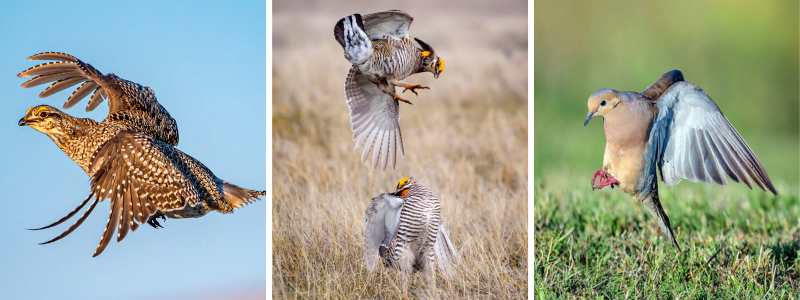
Ringnecked Pheasant
Though native to Asia, and initially introduced in Oregon, South Dakota is the perfect home for ring-necked pheasants. Nurtured by humans and cradled in the rural heart of the state’s prairies, the beloved pheasant was named South Dakota’s state bird in 1943, making South Dakota the only state to have a hunting season for its state bird.
The agrarian nature of all the farmlands in SD provides ample feed for pheasants in the fall: wheat, corn, sunflower, millet, milo and grain sorghum. Harvested fields of these crops are opportune places to hunt for birds picking over these fields for their favorite foods. Grasslands and other fields provide cover where pheasants hide, which have been growing thick and tall this year due to all the moisture in the central region, creating the perfect conditions for pheasant nests. All the chicks born in the spring are now getting into their adult feathers, and will be in various stages of molting throughout September and October.
Even if you aren’t here for hunting you will likely spot a pheasant flying out or sitting on the edge of a field. Male roosters are easily recognized by their long tail feathers and bright colors on their necks and heads.
Pheasant Traditional Season: Oct 19 - Jan 31
Shooting Hours: 10am CT - Sunset (Central Time is used for opening shooting hours across the state)
Open Area: nearly all of SD, see exceptions on the SDGFP website and in the SD Hunting and Trapping Handbook
Daily Limit: 3 rooster pheasants
Possession limit: 15 rooster pheasants
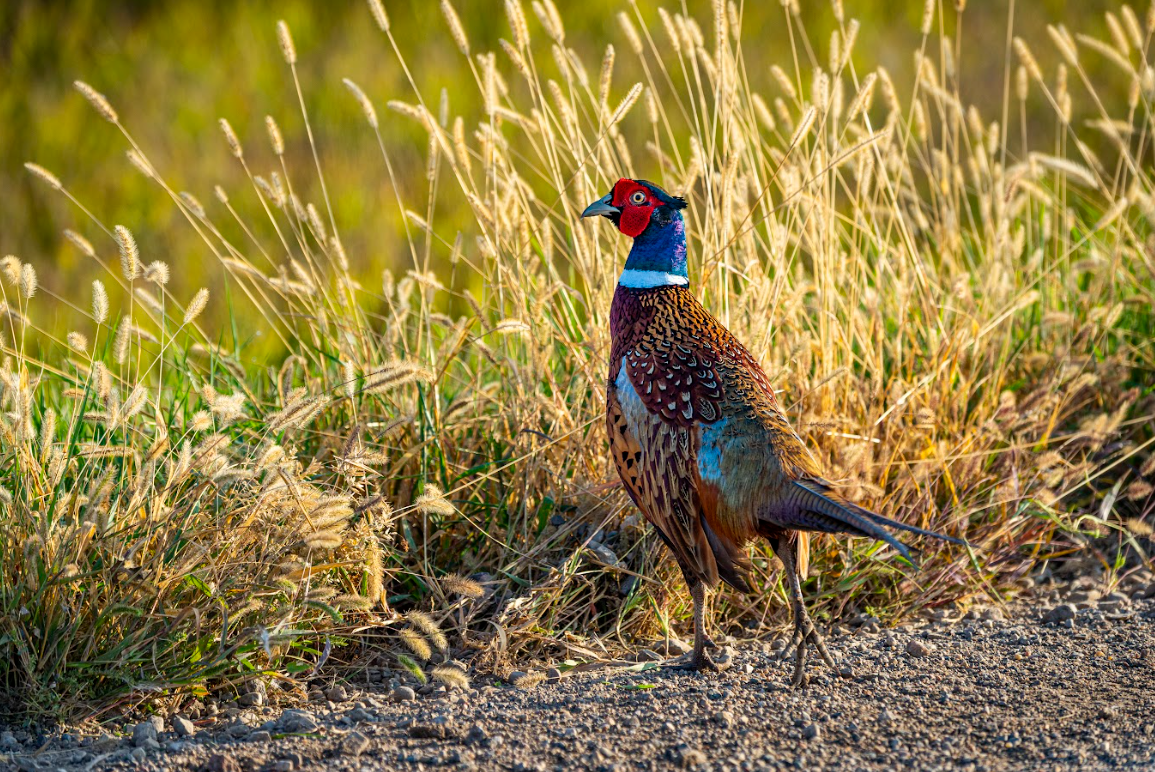
Sharptails and Prairie-chickens
South Dakota’s native birds Sharp-tailed Grouse (also called “sharpies”) and Greater Prairie-chicken are closely related and fall under the prairie grouse label. The Prairie-chickens are the fancier species, and the males are known for their curious, shuffling mating dances. Hunt for these birds mainly in grasslands, like the expansive Fort Pierre National Grasslands, or in cropland or field edges near grasslands. These birds have also benefited from 2024’s ideal weather conditions.
Season: Sept 21 - Jan 31
Shooting Hours: Sunrise - Sunset, statewide
Open Area: Statewide
Daily Limit: 3 (any combination)
Possession Limit: 15
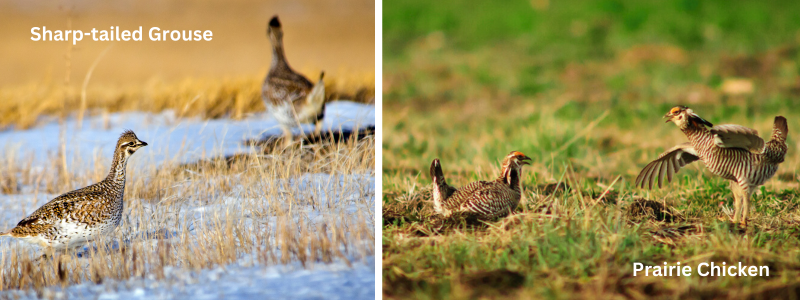

Local Guides & Outfitters
We ask our out-of-state hunters what makes them come back to South Dakota year after year. Their answer: fun and hospitality! When it comes to an awesome hunting trip, the right hunting guide or outfitter can be a critical component to making or breaking your hunting excursion. In Central SoDak there are many experienced guides and outfitters equipped with the know-how and personality to make an impressive and memorable trip. There are even guided hunting trips on horse-back! Guides and outfitters can be found in town or at private lodges on hunting lands teeming with wildlife. These guides have access to thousands upon thousands of acres of both hunting preserves and private grounds.
Central SoDak Hunting Guides
Central SoDak Motels, Hotels, and Stays
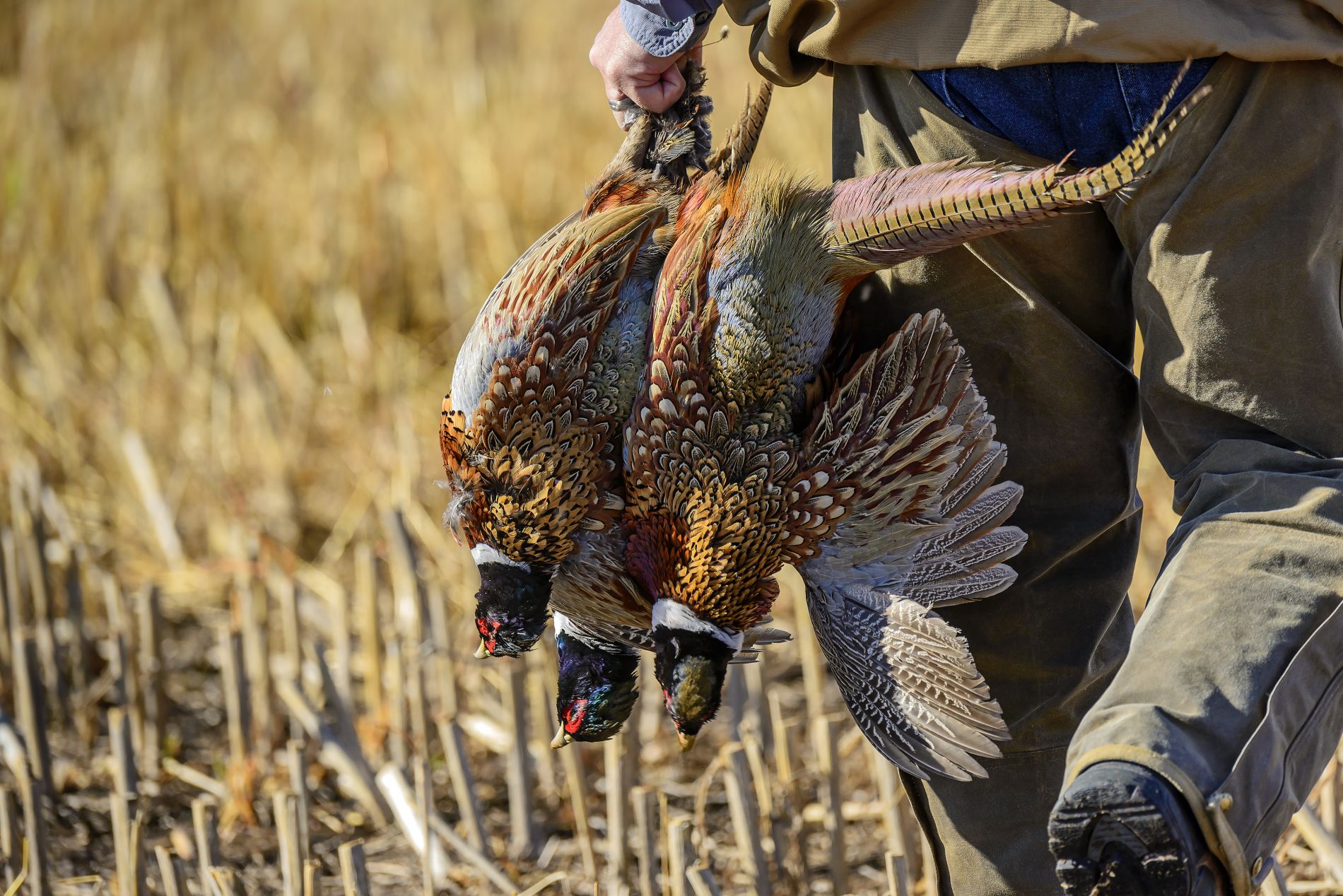
Hunting Resources
SD Game, Fish, and Parks Publications
Hunting publications are updated annually in August. Fishing publications are updated at the start of the year. Publications: SD Public Hunting Atlas, SD Hunting & Trapping Handbook, and the SD Fishing Handbook.
Map, License, & Regulation Resources
General Information: (605) 223-7660
Website: gfp.sd.gov
Email: Wildinfo@state.sd.us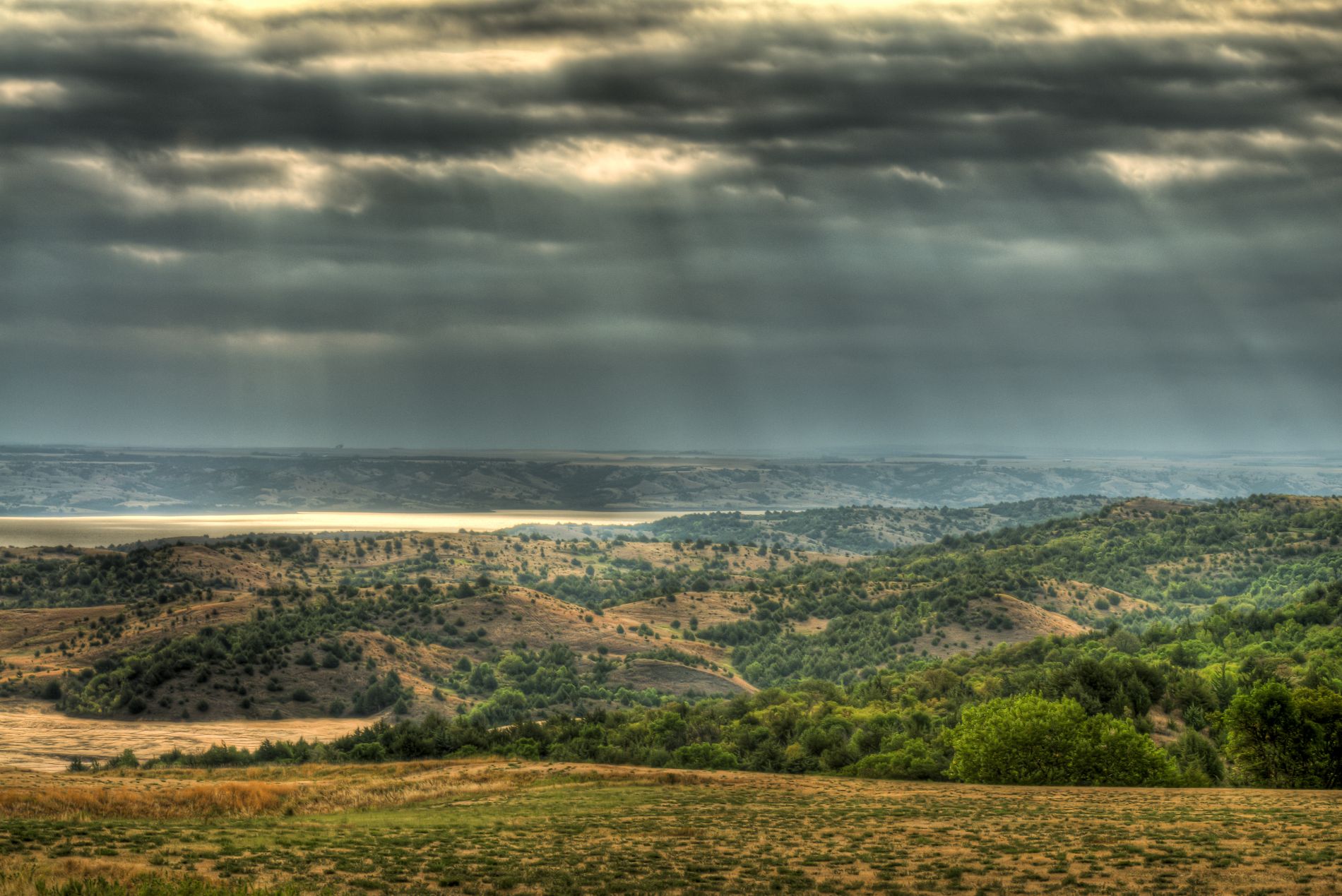
Hunting Tribal Lands
There are nine Native American tribes in South Dakota, five of which reside within the central region. The Missouri River which runs down the center of the state reaches each reservation and provides wonderful tributaries for fishing and water sources for all sorts of wildlife. Hunters can find small game as well as large game opportunities like buffalo, elk, antelope, mule and white-tail deer. Guided hunts are available through tribal offices. Most tribes require special licensing for both small and large game hunting. Individuals looking to hunt Native American grounds will need to contact the appropriate tribal office. Each tribe has their own management for wildlife and recreation uses and SD state hunting licenses are not valid unless authorized by the tribal council.
- Lower Brule Sioux Tribe: (605) 473-5561
- Crow Creek Sioux Tribe: (605) 245-2221
- Cheyenne River Sioux Tribe: (605) 964-4155
- Standing Rock Sioux Tribe: (605) 701-845-8500
- Yankton Sioux Tribe: (605) 384-3641
Last Modified:

